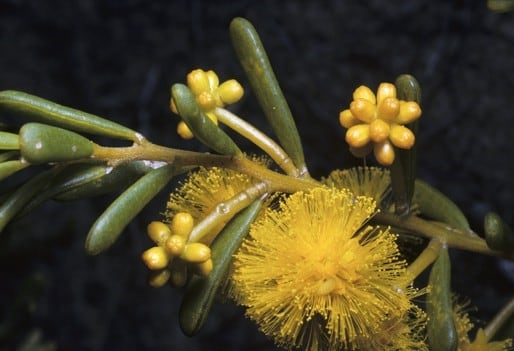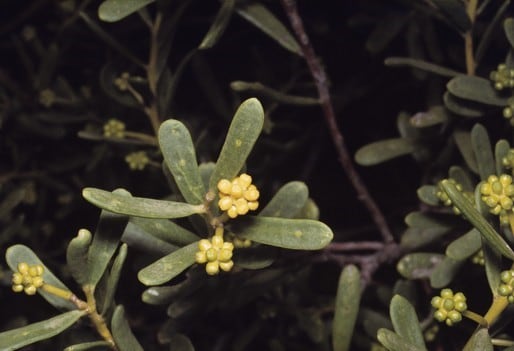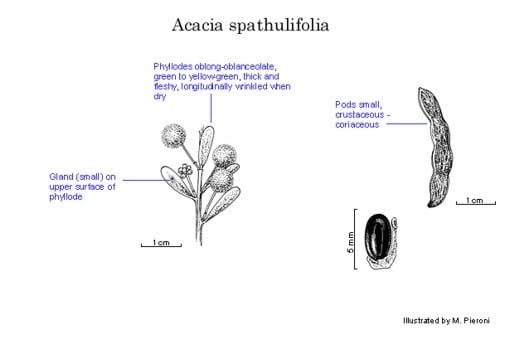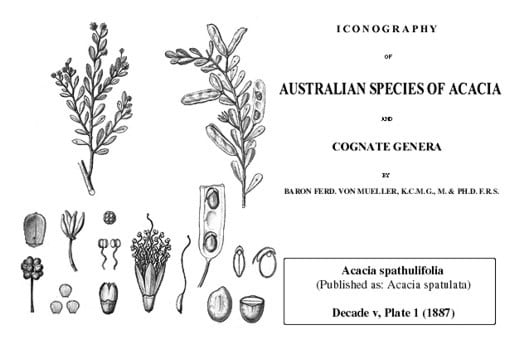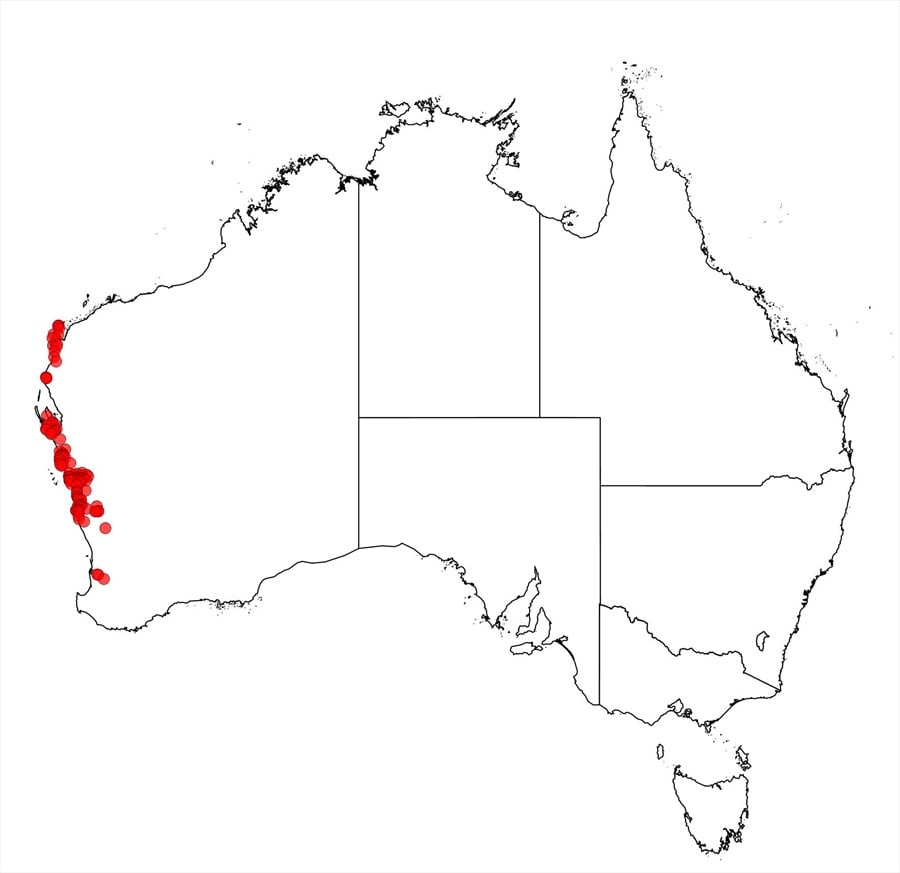Acacia spathulifolia Maslin
WATTLE
Acacias of Australia
Family
Fabaceae
Distribution
Occurs in coastal areas from Cape Range Natl Park S to Tamala but most common from Kalbarri to Jurien, extending inland to Mullewa and Piawaning, W.A. The lectotype locality is probably an error, fide B.R.Maslin, Nuytsia 2: 213 (1978). Commonly forming large populations.
Description
Dense spreading shrub, 0.5–3 m high. Branchlets glabrous or puberulous. Phyllodes horizontally flattened, narrowly oblong-oblanceolate, 1–2 (–4.3) cm long, 1.5–4.5 mm wide, obtuse, thick, fleshy, longitudinally wrinkled and commonly partially involute (dry), green to yellow-green, glabrous; marginal nerves distinct and yellow, with other nerves obscure or absent; gland on upper surface above middle of phyllode. Inflorescences mostly 1-headed with raceme axes 0.5–2 mm long; peduncles 5–15 mm long, glabrous; heads globular, 5–6 mm diam., subdense, 9–15-flowered, golden; bracteoles absent. Flowers 5-merous; sepals united into a ±truncate calyx. Pods narrowly oblong, slightly raised over and slightly constricted between seeds, to 4 cm long, 4–4.5 mm wide, crustaceous-coriaceous, brown, finely longitudinally reticulate, glabrous. Seeds longitudinal, oblong-elliptic, c. 4 mm long, shiny, dark brown; aril white (drying yellowish).
Habitat
Grows in sand over limestone in coastal heath, shrubland and low woodland.
Specimens
W.A.: junction of Giralia Stn road with Exmouth road, M.E.Ballingall 1857A (MO, PERTH); S side of road from Kalbarri, 7.1 km towards Ajana, Kalbarri Natl Park, R.S.Cowan A805 & R.A.Cowan (CANB, NY, PERTH, US); 3.2 km E of Piawaning, F.Lullfitz 1653 (PERTH); 6.4 km W of Greenough R. bridge on Geraldton–Mullewa road, B.R.Maslin 700 (CANB, MEL, PERTH).
Notes
One of the diaphyllodinous species (see under A. diaphyllodinea for definition and references concerning diaphyllodes) closely resembling broad phyllode forms of A. leptospermoides which has glaucous phyllodes when young, more flowers per head, free or 1/2-united sepals and narrower, curved to once-coiled pods (straight to slightly curved in A. spathulifolia). The Milne paralectotype collection from Shark Bay included both these species.
FOA Reference
Data derived from Flora of Australia Volumes 11A (2001), 11B (2001) and 12 (1998), products of ABRS, ©Commonwealth of Australia
Author
Minor edits by J.Rogers
B.R.Maslin
This identification key and fact sheets are available as a mobile application:
URL: https://apps.lucidcentral.org/wattle/
© Copyright 2018. All rights reserved.
